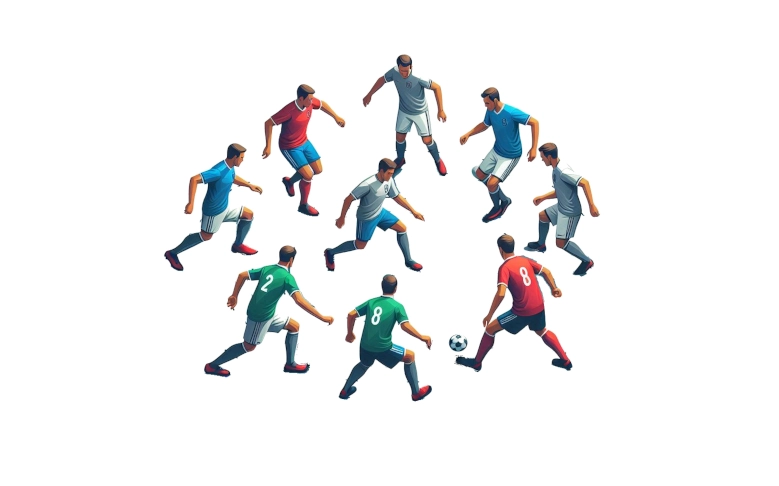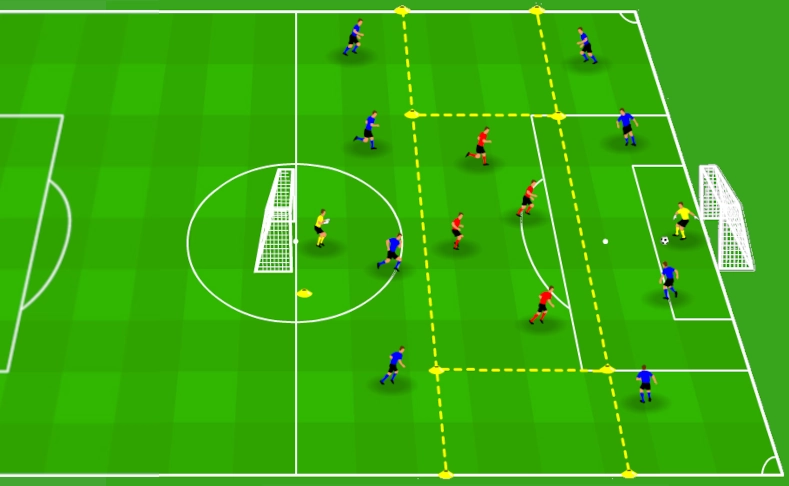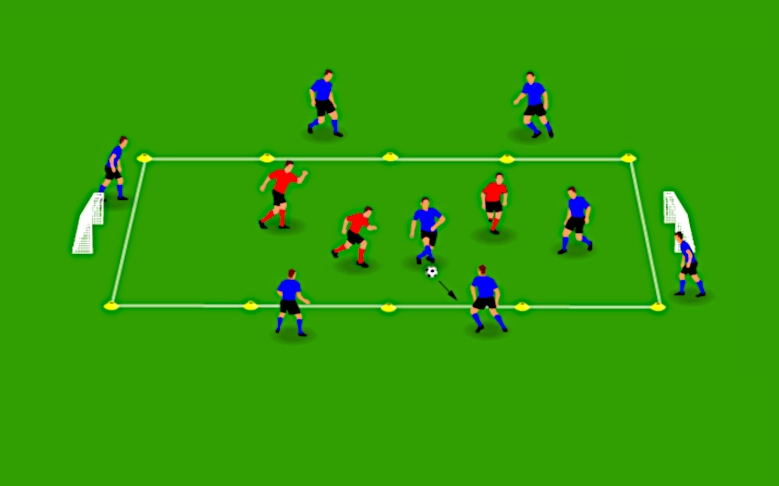The rondo - Encouraging possession football

Possession football is a playing style made popular in recent years. As a result, there are many drills designed to favour possession over a vertical game. The rondo is one of these exercises.
The rondo is a passing drill that improves player decision making, coordination, team play, creativity, competitiveness, and physical conditioning. This drill is as old as football. Rondos began as a game to relax or as a warm-up. With the pass of time, coaches made rondo a key component of their training sessions.
Setup
In a rondo, one group of players keeps possession of the ball by passing it around, while a smaller group of players tries to take possession. It is actually a game of piggy in the middle but played with the feet. Rondos take place in close proximity, with the possessing group often circled around the opposing group.
Usually, a rondo is set up as an 8 vs 2 game. Eight players stand in a circle and attempt to pass the ball to each other, while the two in the middle try to intercept it. The goal of the players outside the circle is to reach a target: 10, 20 or 30 passes. The players in possession of the ball are allowed one or two touches before passing the ball. If one of the players in the middle retrieves the ball, the drill restarts and the man responsible for losing the ball takes his place.
Variations
This drill has many variations: 6 vs 2, 5 vs 2, 3 vs 1, etc. Sometimes coaches switch rondos to a positional game. For example, two teams with the same number of players work inside a box. Players are free to move anywhere in the box. One team tries to pass the ball using only one, two or three touches while the other tries to recover the ball. Once the ball is intercepted, teams switch roles.
Benefits
The rondo has multiple benefits: it improves technique in tight areas, encourages intelligent movement and forces players to pass the ball in neat triangles. From a defensive point of view, it teaches to press with maximum efficacy, closing down passing lanes and attempting to read the player’s intentions on the ball.
In Stan Baker’s book, Our Competition is the World, Johan Cruyff says about the rondo: “Everything that goes on in a match, except shooting, you can do in a rondo. The competitive aspect, fighting to make space, what to do when in possession and what to do when you haven’t got the ball, how to play ‘one touch’ soccer, how to counteract the tight marking and how to win the ball back.”
Take it seriously
Players often see rondos as a bit of a laugh or a good way to start and end warm-ups. However, players must put 100% effort, or it is better not to do them at all. Rondos require constant work on the training ground and high levels of concentration. Therefore, players should not slack off or joke around.
The intensity of these drills is crucial. In the beginning, the ball may go outside of the perimeter of the rondo often or the passing team never reaching the target number of passes. Ask players to pay attention to how they positioned themselves, how they received the ball, whether they controlled it with their left or right foot, etc.
If you can, film your rondos to compare. You will be amazed at the results. Then, laugh with your team watching videos of rondos from professional teams and comparing them with your own team videos.
Use rondos in every training, and you soon will notice improvements in your team’s possession of the ball. Spice it up a bit and introduce your own flavour, but keep it simple. After all, rondos must be fun and simple.



